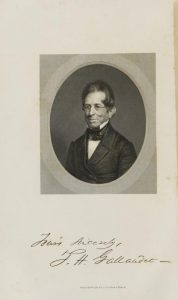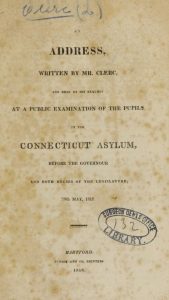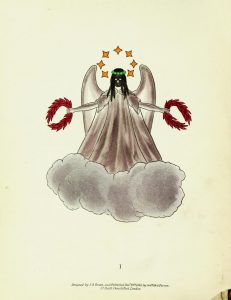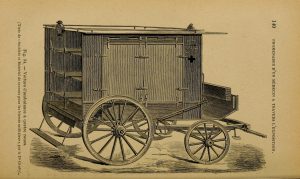~This post courtesy Katie Healey and Caroline Lieffers, doctoral students in Yale’s Program for the History of Science and Medicine, with additions by Melissa Grafe, John R. Bumstead Librarian for Medical History, Head of the Medical Historical Library.

Portrait of Thomas H. Gallaudet (1787-1851). Gallaudet is shown here wearing glasses; his name in American Sign Language is the same as the sign for GLASSES. From Henry Barnard, A discourse in commemoration of the life, character, and services of the Rev. Thomas H. Gallaudet, LL. D. : delivered before the citizens of Hartford, Jan. 7th, 1852 : with an appendix containing history of deaf-mute instruction and institutions and other documents (Hartford: Brockett & Hutchison, 1852).
Thomas Hopkins Gallaudet, instrumental in the establishment of the first permanent school for deaf children in the United States, was born on December 10th, 1787. The popular account of the school’s founding states that in 1814, the young Reverend Gallaudet wondered why the daughter of his Hartford neighbor did not laugh or play with his own younger siblings. Nine-year-old Alice Cogswell was deaf, and her family and friends struggled to communicate with her. Gallaudet traced the letters H-A-T into the dirt with a stick and pointed to his hat. Alice immediately understood, and Gallaudet realized his life’s calling. After observing different methods of instruction and communication on a European voyage supported by Alice’s father, Dr. Mason Fitch Cogswell (BA Yale 1780), Gallaudet concluded that the French method of sign language was most effective. He recruited Deaf Frenchman Laurent Clerc to help establish the Connecticut Asylum for the Education and Instruction of Deaf and Dumb Persons, which opened in Hartford on April 15, 1817. Alice Cogswell was its first registered student. Now called the American School for the Deaf, this historic institution will celebrate its bicentennial in 2017.
Thomas Hopkins Gallaudet earned his bachelor’s (1805) and master’s (1808) degrees at Yale before graduating from Andover Theological Seminary in 1814. Following his serendipitous encounter with Alice Cogswell, Gallaudet embarked on a year-long tour of European deaf schools. After a frustrating visit to the secretive Braidwood Academy in England, which taught speech and speechreading, he attended a demonstration of the French manual method—that is, sign language—in London. The National Institute of the Deaf in Paris invited Gallaudet to study French Sign Language and deaf instruction. Impressed with their curriculum, Gallaudet persuaded the esteemed instructor Laurent Clerc, a former student of the Institute, to teach deaf children in America. A commemoration of Gallaudet’s life was printed in 1852 and is available through the Medical Heritage Library partner National Library of Medicine.
Laurent Clerc was born in La Balme, France in 1785. As he later recounted in his autobiography, he fell into a fire as a toddler, which left him deafened and scarred his cheek. His name is signed by brushing the index and middle fingers twice down the cheek. Clerc was an exceptional student and later an internationally known instructor at the National Institute of the Deaf in Paris. He left his students only reluctantly in 1816, when Gallaudet persuaded him to come help American children. During the fifty-two-day voyage across the Atlantic, Clerc and Gallaudet exchanged lessons in French Sign Language and English, and Clerc kept a diary to practice his English. The Laurent Clerc papers (MS140) are available for research at Yale University’s Manuscripts and Archives, and the Mason Fitch Cogswell papers (GEN MSS 920) are at Beinecke Rare Book and Manuscript Library at Yale University. Read an address on deaf education delivered by Clerc in 1818 through this online copy, provided by the Medical Heritage Library.

Title page from Laurent Clerc, An address, written by Mr. Clerc, and read by his request at a public examination of the pupils in the Connecticut Asylum : before the governour and both houses of the legislature, 28th May, 1818 (Hartford: Hudson & Co. Printers, 1818).
Gallaudet University in Washington D.C. was named Gallaudet College in 1894 in honor of Thomas Hopkins Gallaudet. Founded in 1864, Gallaudet University is the world’s only liberal arts college specifically for the Deaf and hard of hearing. It remains a center of both Deaf culture and Deaf rights activism.
For more on Gallaudet and Deaf education and culture, make sure to visit, the online exhibition Deaf: Cultures and Communication, 1600 to the Present.










